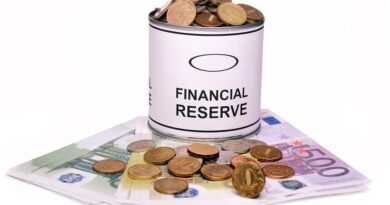Expert Advice: How to Navigate the Silver Market for Maximum Returns
Navigating the Silver Market for Maximum Returns
Investing in precious metals can be a lucrative way to diversify your portfolio and protect your wealth from market volatility. Silver, in particular, has long been considered a safe haven asset and a store of value. With the price of silver fluctuating constantly, it’s important to have a solid understanding of the market and the factors that can influence its performance. In this article, we will provide expert advice on how to navigate the silver market for maximum returns.
Understanding the Silver Market
Before diving into the silver market, it’s essential to understand the fundamentals of how it operates. Silver is a commodity, meaning its value is determined by supply and demand dynamics, as well as macroeconomic factors. Unlike gold, which is primarily used for jewelry and investment purposes, silver has a wide range of industrial applications, including electronics, solar panels, and medical devices. This industrial demand can have a significant impact on the price of silver.
In addition to industrial demand, silver is also influenced by investment demand, which is driven by factors like inflation, geopolitical uncertainty, and currency devaluation. Many investors turn to silver as a hedge against economic uncertainty and as a way to preserve their purchasing power over time.
Factors Influencing the Price of Silver
Several key factors can influence the price of silver, including:
1. Supply and Demand: Like any commodity, the price of silver is heavily influenced by supply and demand dynamics. If demand outstrips supply, prices tend to rise, and vice versa.
2. Economic Indicators: Economic indicators, such as inflation rates, GDP growth, and interest rates, can impact the price of silver. In times of economic uncertainty, investors often turn to silver as a safe haven asset.
3. USD Strength: The strength of the US dollar has a direct impact on the price of silver. A stronger dollar tends to push down the price of silver, while a weaker dollar can boost prices.
4. Geopolitical Events: Geopolitical events, such as wars, trade disputes, and political unrest, can cause silver prices to fluctuate. Investors often turn to silver as a safe haven asset during times of geopolitical turmoil.
5. Industrial Demand: As mentioned earlier, silver has a wide range of industrial applications. Changes in industrial demand can impact the price of silver.
Expert Tips for Investing in Silver
Now that you have a better understanding of the silver market, here are some expert tips for navigating it for maximum returns:
1. Diversify Your Portfolio: As with any investment, it’s essential to diversify your portfolio to mitigate risk. Investing in silver can help diversify your portfolio and protect your wealth from market volatility.
2. Stay Informed: Keep up to date with market trends, economic indicators, and geopolitical events that can impact the price of silver. Being informed can help you make better investment decisions.
3. Consider Dollar-Cost Averaging: Dollar-cost averaging is a strategy where you invest a fixed amount of money in silver regularly, regardless of the price. This can help smooth out price fluctuations and reduce the risk of timing the market.
4. Consider Physical vs. Paper Silver: When investing in silver, you have the option of purchasing physical silver or investing in silver ETFs or mining stocks. Each option has its pros and cons, so consider your investment goals and risk tolerance before making a decision.
5. Set Realistic Expectations: Silver can be a volatile asset, so it’s essential to set realistic expectations for your investment. Remember that investing in silver is a long-term strategy, and short-term price fluctuations are common.
Conclusion
Investing in silver can be a profitable way to diversify your portfolio and protect your wealth from market volatility. By understanding the fundamentals of the silver market and staying informed about key factors that can influence its performance, you can navigate the market for maximum returns. Remember to diversify your portfolio, stay informed, consider dollar-cost averaging, and set realistic expectations for your investment. With the right approach, investing in silver can be a valuable addition to your investment portfolio.





